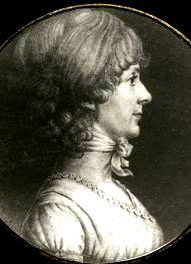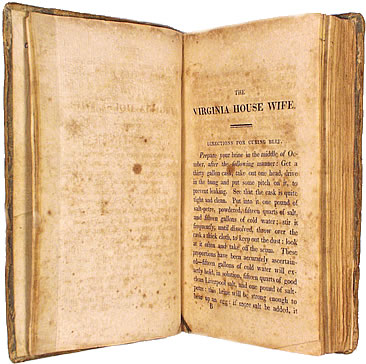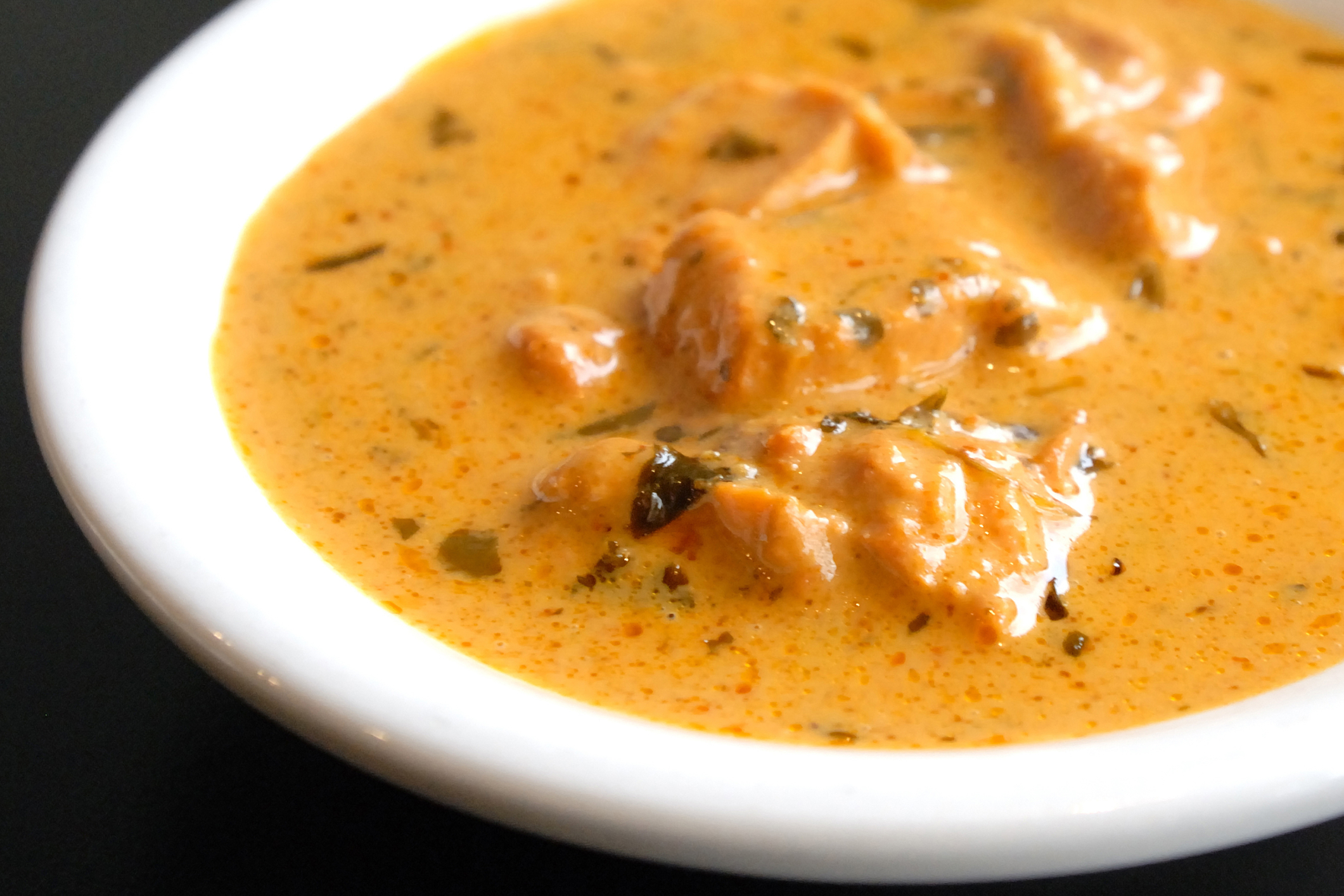
Although not the first published cookbook of US origin, it was the first highly successful one. This may be in part because of the wide range of recipes offered in the book, from Virginian specialties to English, French, and Spanish dishes, to Eastern and Western Indian curries.

Separated by 50 years from Hannah Glasse’s recipe, Randolph’s recipe is much more sophisticated and complex. It has a much broader compliment of spices in the seasoning and the addition of garlic along with onions helps deepen the savory aspects of the dish.
So, what does it taste like? First off, it is very different from the Hannah Glasse curry. Nutmeg and mace are the dominant flavors, with turmeric and coriander following. The onions especially pick up the turmeric flavor, which allows you to taste it as a distinct flavor. Surprisingly, perhaps, this curry also packs a bit of a wallop in terms of heat with all that Cayenne pepper in the mix. I would rate it a 4-5 on a scale of modern hot dishes, so don’t be afraid of it. However, it is a great deal hotter than most early 19th Century food I’ve tasted. So, enough words. . . on to the recipes.
_____
Crucial to recreation of the dish is the use of Mary’s recipe for curry powder. As you can see, this mixture of spices is much richer and more complex than the one used in the earlier Hannah Glasse recipe. That recipe had only turmeric, ginger and black pepper for seasoning. Mary’s recipe reads:
CURRY POWDER
One ounce turmeric, one do. coriander seed, one do. cumin seed, one do. white ginger, one of nutmeg, one of mace, and one of Cayenne pepper; pound all together, and pass them through a fine sieve; bottle and cork it well – one tea-spoonful is sufficient to season any dish.
Listed in modern form, this recipe reads:
Mary Randolph’s Curry Powder
Ingredients
1-ounce turmeric
1-ounce coriander seed
1-ounce cumin seed
1 ounce powdered ginger
1-ounce nutmeg
1 ounce of mace
1 ounce of Cayenne pepper
Directions
Grate nutmeg and turmeric and measure out one ounce of each spice. Combine with other dried and powdered ingredients and mix. Grind coriander and cumin seeds separately until fine and combine with other ingredients. If desired, grind all ingredients together for a few more second to get a more integrated mix.
Now, onto the construction of the curry itself. Mary’s recipe reads:
TO MAKE A DISH OF CURRY AFTER THE EAST INDIAN MANNER
Cut two chickens as for fricassee, wash them clean, and put them in a stew pan with as much water as will cover them; sprinkle them with a large spoonful of salt, and let them boil till tender, covered close all the time, and skim them well. When boiled enough, take up the chickens, and put the liquor of them into a pan, then put half a pound of fresh butter in the pan, and brown it a little; put in two cloves of garlic, and a large onion sliced, and let these all fry till brown, often shaking the pan; then put in the chickens, and sprinkle over them two or three spoonsful of curry powder; then cover the pan close, and let the chicken do till brown, often shaking the pan; then put in the liquor the chickens were boiled in, and let all stew till tender; if acid is agreeable, squeeze the juice of a lemon or orange in it.
My interpretation of the recipe follows:
Mary Randolph’s Butter Chicken (1824)
Ingredients
1-pound chicken breast meat, cut into bitesize pieces
1 stick unsalted butter
1-2 teaspoons garlic, minced
1 large or two medium yellow onions, peeled, sliced and separated
3 heaping teaspoons curry powder (prepared from the recipe above)
1 teaspoon salt
2-3 cups low-salt or homemade chicken stock
¼ -1/3 cup fresh lemon or orange juice
Directions
Melt butter in a saucepan and when warm add the chicken and sauté until the meat is opaque and starting to color. Remove chicken with a slotted spoon and set aside. Add the garlic and stir well. Then add the onions and sauté for 5-8 minutes, stirring frequently until they start to soften.
Add the curry powder and salt and if dry, add a small amount of the stock to moisten the pan and spices. Sauté for 2-3 minutes to allow flavors to blend. Then add the chicken and any accumulated juices back into the pan and stir well. Add stock to almost cover the meat and stir again. Cook to warm over medium heat, stirring occasionally.
When warm, cover and reduce heat to so covered chicken cooks steadily at a medium simmer for 20-30 minutes or until chicken softens. Stir occasionally while chicken cooks.
When the chicken is tender, uncover and if necessary let sauce reduce a bit. When nearly done, reduce heat to lowest and add the lemon or orange juice and stir in well. Cook to heat and serve with rice or bread.
_____
As you can see, I just couldn’t bring myself to use two sticks of butter for this dish. It worked very well with one stick and your cardiovascular system with thank me for the reduction. Unlike the Hannah Glasse recipe, there is no cream added. Perhaps the large quantity of butter was supposed to offset the absence of cream, but one stick (which is about 3 times the amount of butter I use in modern butter-based curries) works nicely, and serves to blanket and unite the flavor of the spices in the curry powder.
The quantity of nutmeg and mace is interesting to me. Firstly, it makes it probable that this dish is an adaptation of a Mughali recipe which would have been relatively close to but still different from the Parsi roots of Butter Chicken.
Secondly, at Mary Randolph’s time, this recipe would have been very expensive to make because of the price of nutmeg and mace at that time. Granted, the trees that produce these spices were introduced by the French into the New World (French Guyana) in the mid-1770s, and pirated by the British to their Grenadian colonies a few years after that. However, nutmeg trees grow very slowly (I know, I have one) and I don’t think that there would have been enough Grenadian nutmeg on the colonial market by the 1820s to make those spices affordable. I may be miscalculating, but I still think that it would be at least a couple of decades after Mary Randolph that the prices of those spices would have fallen. So, if that line of reasoning is correct, this would be a special dish, perhaps for a celebration, for a special meal, or for demonstration of conspicuous consumption.
On another note, we tried it with both lemon and orange juice and like it both ways. Although, most modern Indian dishes tend to use lemon juice, the orange juice lends a gentler, more “Persian” flavor, which harken back to the roots of the dish.
This is the last historical curry recipe I’m going to post before my trip (Uzbekistan, Kazakhstan, Georgia and Armenia), but I will continue this exploration at some point after my return. I have an early-to-mid 18th Century Dutch-American recipe for Butter Chicken from Anna de Peyster’s manuscripts held by the Van Cortland trust, and a Facebook colleague has pointed out some very early recipes in manuscripts from the 17th Century that I simply have to try. So stay tuned for more on Indian Curries Through Foreign Eyes.
(Words and interpretation of recipes by Laura Kelley. Photo of The Virginia Housewife from the Virginia Historical Society; Photo of Mary Randolph’s Butter Chicken by Kumikomurakamicampos @ Dreamstime.com; other images in the public domain.)

